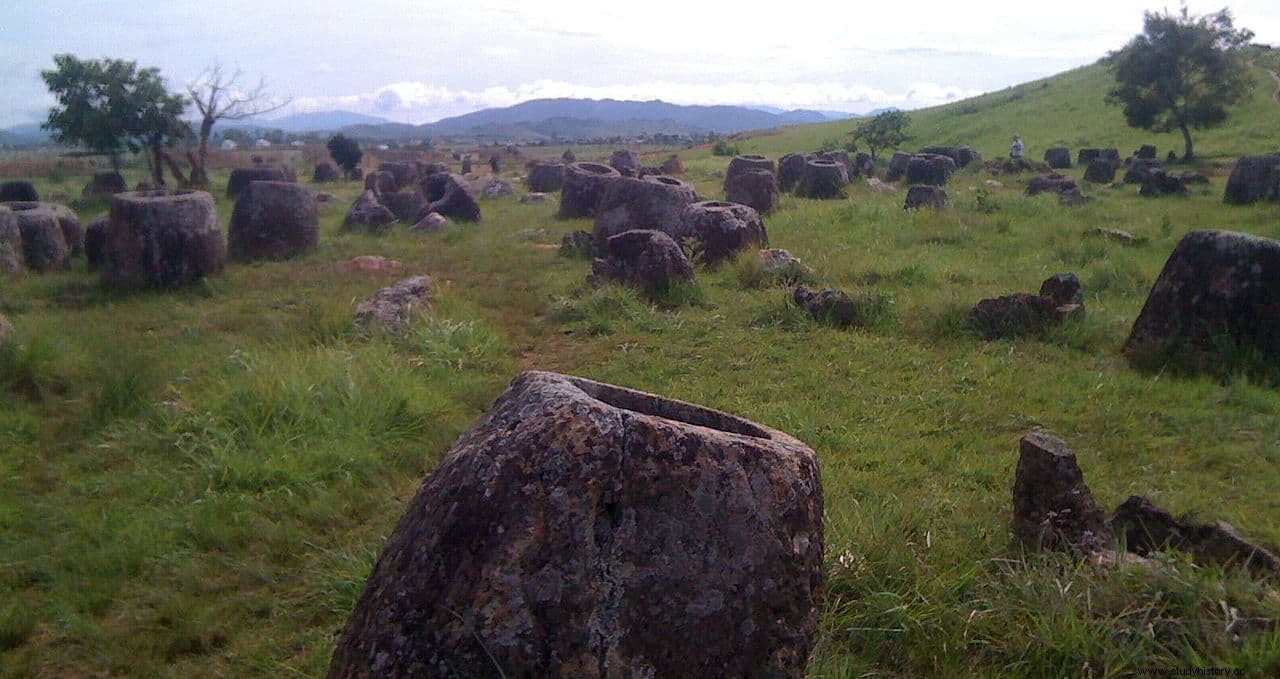When we talked in a previous article about the plain of the megalithic jars of Laos, we said that neither their origin nor their exact function was known, although it was estimated that the oldest jars could date from the Iron Age.
Now new research has determined that the stone jars were probably placed between 1240 and 660 BC
Samples were obtained by a team led by Dr. Louise Shewan, from the University of Melbourne, Associate Professor Dougald O'Reilly, from the Australian National University (ANU), and Dr. Thonglith Luangkoth, from the Department of Lao Heritage. of sediments from two of the more than 120 megalithic sites with registered jars.
The samples were analyzed using a technique called Optically Stimulated Luminescence (OSL) to determine when the sediment grains were last exposed to sunlight.
With these new data and radiocarbon dates obtained for skeletal material and charcoal from other burial contexts, we now know that these sites have held enduring ritual significance from the period of their initial jug placement into historic times. said Dr. Shewan.
The megalithic jar sites of northern Laos consist of carved stone jars one to three meters high, weighing up to 20 tons, scattered across the landscape, appearing singly or in groups of up to several hundred.
Dr. Shewan and her team completed their most recent excavations in March 2020, revisiting Site No. 1 (Ban Hai Hin), and arriving back in Australia just before the international border closure due to the pandemic.

The site revealed more burials placed around the jars and confirmed earlier observations that exotic boulders scattered around the site are markers for the pottery funerary jars buried beneath.
Dr. Shewan and her collaborators present new radiocarbon results for site use and also introduce geochronological data that determine the likely quarry source for one of the largest megalithic sites.
While detrital zircon U-Pb dating has been used by geologists for several decades, this methodology has recently been used to establish the provenance of ceramic and stone sources in archaeological contexts, including Stonehenge.
Conducted at the Australian National University by Associate Professor Richard Armstrong, U-Pb zircon ages measured in jar samples from Site 1 were compared to potential source material, including a sandstone outcrop and an incomplete jar from a presumed quarry located about 8 km away. Zircon age distributions revealed a very similar provenance, suggesting that this outcrop was the likely source of the material used to create jars at the site.
However, it remains a mystery how the jars were moved from the quarry to the site said Professor O'Reilly.
The next challenge for researchers is to obtain more samples from other sites and from the entire geographic range of this megalithic culture to better understand these enigmatic sites and the period in which they were created.
Dr. Shewan noted that this is not a particularly easy task, given the widespread contamination by unexploded ordnance in the region, where less than 10% of known deposits have been cleaned up. We hope that this complex process will help us share more knowledge about what is one of the most mysterious archaeological cultures in Southeast Asia .
